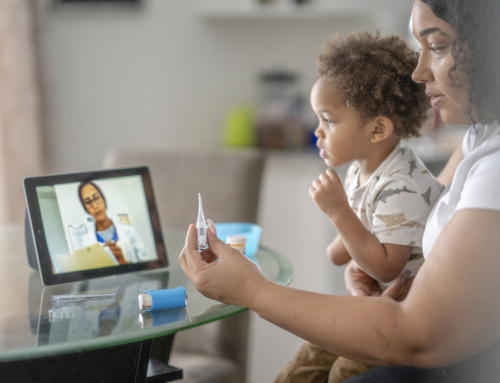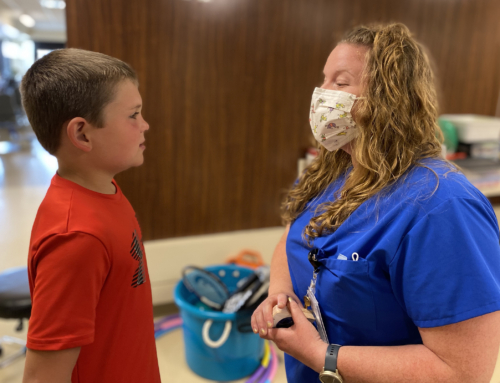When to Choose Walk-in Over a Doctor’s Appointment
According to a statistical brief published by the National Institutes of Health, upper respiratory infections are the number one reason parents seek same-day urgent care for their children. When breathing seems compromised, some choose to go to the ER instead.
When upper respiratory infections—colds or flus— cause a high fever or make it hard for your baby to breathe, it can be scary. Anderson says that babies under two months with a fever over 100 degrees need to go straight to the Emergency Department. TMH offers a suction clinic in the ED where respiratory therapists assess a young child’s breathing and use a special machine to remove mucous, helping babies, and parents, breathe easier.
“Use the Walk-in Clinic for urgent care when things are acute—symptoms that come on in the past few days or week that are worrisome, or suddenly seem worse,” a PA-C with TMH Medical Clinic suggested.
Treating Upper Respiratory Infections (URI)
Since antibiotics only work on bacterial infections, not viruses, often the treatment for URIs is rest, fluids and some over-the-counter medicines to treat symptoms. Worsening symptoms can indicate a secondary infection—bronchitis, a sinus infection, ear infection or pneumonia.
If a fever or cough worsens, or if your child is experiencing facial pain or headaches, it’s time to seek care. Secondary infections often develop 7 to 10 days after the start of the URI.
“Any time you have a virus, you are more susceptible to a bacterial infection. Most commonly in children this means an ear infection or pneumonia,” the PA-C said.
It’s good to keep in mind that with babies teething can also cause a fever. Also, if one person has strep in the household, you don’t all have to automatically get checked—only when symptoms occur.
Other Reasons for Using the Walk-in Clinic
Minor injuries caused by falling or running into something while playing is another common reason to seek urgent care for young kids. For older kids, sprains and strains also make the list. While applying RICE—rest, ice, compression and elevation—works well to treat minor injuries, sometimes a splint or sling is needed.
any parents use the Walk-in Clinic simply for convenience—and there is nothing wrong with that. It is good, however, to have a regular doctor for your child, a family medicine physician or a pediatrician. They are more able to track your child’s health over time and catch things that are less obvious. If it’s not urgent, make a doctor’s appointment instead.




![Well-child checks vs. sports physicals — what’s the difference? [INFOGRAPHIC]](https://memorialregionalhealth.com/wp-content/uploads/Well-Child-Checks-vs.-Sports-Physicals-Image-500x383.jpg)
